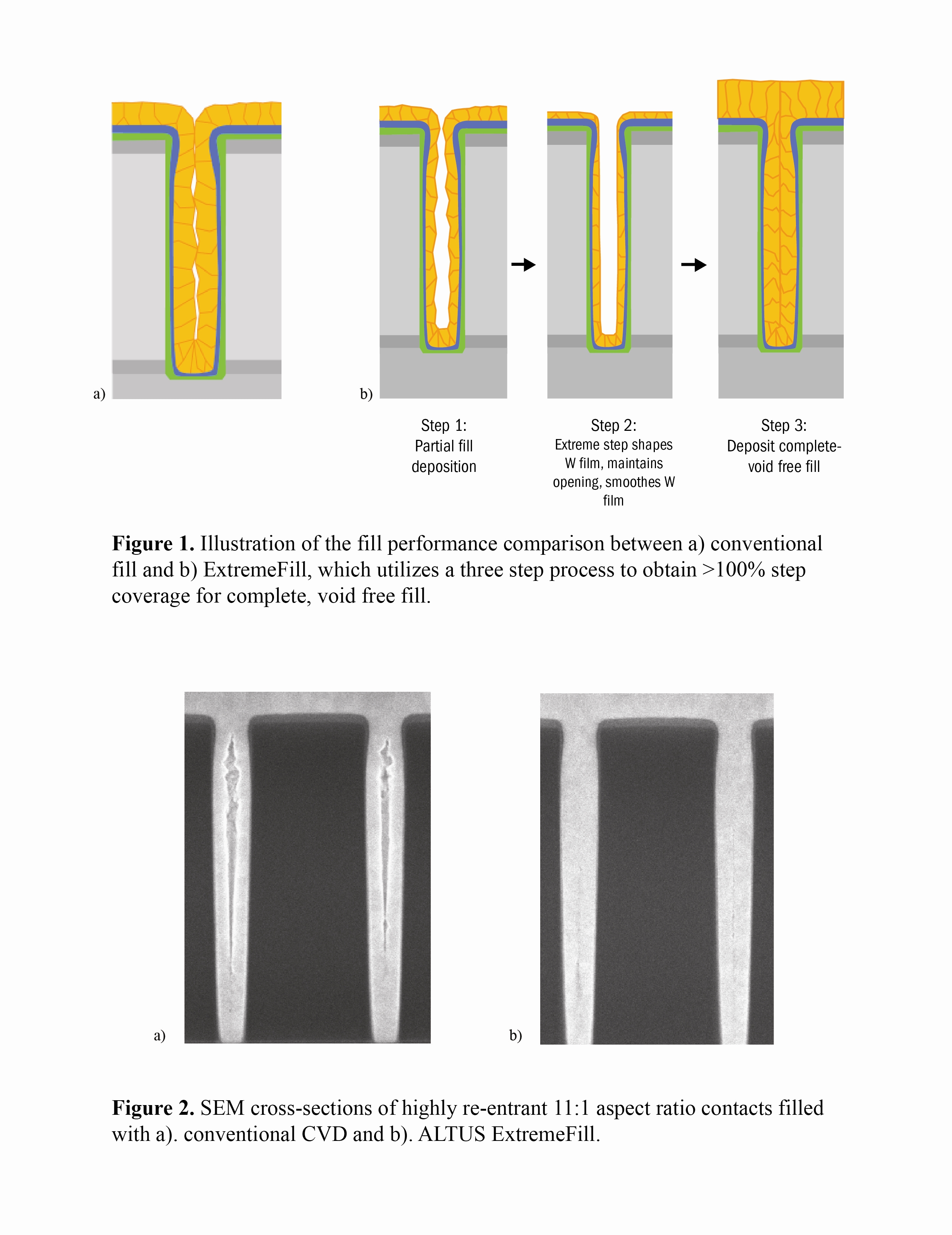Jul 11 2011
Novellus Systems (NASDAQ: NVLS) today introduced its ALTUS Max ExtremeFill process technology for challenging tungsten fill applications requiring > 100 percent step coverage. The ExtremeFill process is performed in the company's new EFx process module, an extension to the existing ALTUS Max platform. ExtremeFill enhances the fill capability and technology of the ALTUS Max, enabling memory, logic and foundry chip manufacturers to develop conventional 2X nm as well as three-dimensional devices.
ALTUS ExtremeFill is available on new systems and can be upgraded onto existing ALTUS or ALTUS Max systems, providing customers with technology extendibility while minimizing their investment.

Novellus' tungsten nucleation and chemical vapor deposition (CVD) processes have historically been successful in meeting fill challenges where nearly 100 percent step coverage is required to meet existing fill and resistivity requirements. Despite liner/barrier overhang from the prior metallization step, the relatively wide openings of structures ¡Ý 3X nm have allowed conventional CVD technology to provide sufficient nucleation and void-free fill. However, there are new and emerging device requirements which demand greater than 100 percent step coverage to prevent voids from occurring during the tungsten fill sequence.
The new EFx module incorporates an innovative process used to contour the tungsten film deposition, providing up to 150 percent step coverage. This enables complete fill of challenging contact structures with re-entrant etch profiles or overhanging barrier films. The ExtremeFill process addresses the needs of current manufacturing technology nodes (¡Ý3X nm) as well as advanced development nodes (¡Ü2X nm). Figure 1 compares conventional CVD tungsten fill techniques (a) with the ExtremeFill process (b). Conventional CVD tungsten deposition is limited by the barrier overhang (shown in the blue layer) which results in closure of the feature opening before complete fill can take place. Rough tungsten films can cause a mismatch in film growth, resulting in voids and a large seam. The ExtremeFill process shapes and maintains the feature opening while smoothing the tungsten film, providing complete, void-free fill as shown in step 3 in Figure 1b.
Figure 2a shows a scanning electron microscope cross-section of a feature filled using conventional CVD. The structure is highly re-entrant, where the width at the opening of the feature is much narrower than the rest. With conventional CVD, the upper portion of the contact is closed before the lower portion of the contact is completely filled, resulting in a large void in that region. Figure 2b shows the same feature that has been completely filled using the ExtremeFill process, with only a very minimal seam at the center where the film grows together from the sidewalls. In addition to improved fill performance, ExtremeFill decreases RC delay (by lowering film resistivity), produces higher yields (by eliminating voids) and allows devices to consume less power (by lowering contact resistance).
"The ALTUS ExtremeFill system exemplifies Novellus' continuing innovation aimed at extending tungsten deposition technology," said Aaron Fellis, vice president and general manager of Novellus' Direct Metals Business Unit. "This unique method of tungsten CVD deposition will enable our customers to address tungsten fill challenges in their current products, as well as extending the technology to the next generation of products with ¡Ü2X nm geometries and 3D device structures."